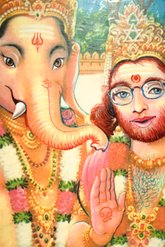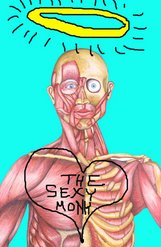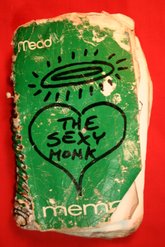









In Flesh and Bone # 1, I discussed how I first came to be a visiting artist at the Northwest University gross anatomy lab (thanks to the help of Elizabeth Ockwell and Dr. Perkins,) while I was a student at The School of the Art Institute of Chicago. I first went to the gross lab, because I was interested in learning basic anatomy and to be able to render the figure in a more confident way, but I soon became fascinated with the relationship between the medical students and the body that they were assigned. When turning the body, the students tended to be quite tender, treating the cadaver with the same respect you would give a living person. They were also extremely squeamish when cutting into sensitive areas like the face or genitals. Yet the process of dissection required us to dismantle the body with sharp instruments-a strange dichotomy. And hanging over the proceedings was a combination of fevered studiousness and gallows humor. Even I graduated and left Chicago, I couldn't get dissection off my mind. I wanted to return to the lab and explore these things further. In the summer of 1998, I was staying with my parents, working and applying to graduate school, when I sent a letter to Eastern Virginia Medical School in Norfolk, describing my prior experience and asking if anyone there would be interested in working with me. My letter was answered by Dr. George Goode, a professor at E.V.M.S. He agreed to let me visit the gross lab free of charge in exchange for answering student questions. During a typical day, I would have rubber gloves and a scalpel (for finding a hidden vein or spleen) in one pocket and ink and water colors in the other. The sketches I created during my visits to E.V.M.S. reflect my change in interest from the anatomy of the cadaver to the physical process of dissection. I remember that some of the students were more upset about having their portrait sketched than they were about being elbow-deep in a dead body. I am grateful for the opportunity to work with such an excellent group of medical students-thank you, Dr. Goode.



No comments:
Post a Comment